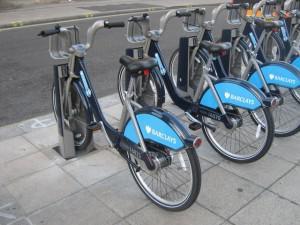 Overconsumption not only harms the environment but creates debt, clutter and complexity in our lives. While PhD programs in business continue to strive for production efficiency and cost reductions, the abundance of goods available today provides an opportunity to leverage consumption. Collaborative consumption offers an alternative to ownership-based consumption. It fulfills needs and wants through renting and sharing goods rather than selling them. Although collaborative consumption does not present an entirely new concept, it is now rapidly growing and evolving.
Overconsumption not only harms the environment but creates debt, clutter and complexity in our lives. While PhD programs in business continue to strive for production efficiency and cost reductions, the abundance of goods available today provides an opportunity to leverage consumption. Collaborative consumption offers an alternative to ownership-based consumption. It fulfills needs and wants through renting and sharing goods rather than selling them. Although collaborative consumption does not present an entirely new concept, it is now rapidly growing and evolving.
Services that let people rent textbooks and movies form an important part of the collaborative consumption trend, according to the Huffington Post. It also comprises the repeated resale of used items, like clothing for children. Many young children can use such clothes before they wear out. Some companies rent items to people, while others facilitate the renting or sharing of items among individuals.
Agence France-Presse recently reported that many new companies have applied business models based upon collaborative consumption. Businesses can generate income by helping people exchange labor or rent out possessions. They earn money through commissions, fees or advertising revenue. Some of these companies have become very successful in a relatively short time.
Institutions and businesses are even saving money by utilizing their own form of collaborative consumption, according to the University of Pennsylvania’s Wharton School of Business. Many internet companies share the same computer servers, for example. Such practices even benefit competitors; it’s not uncommon for the same airplane to carry packages for both FedEx and the U.S. Postal Service.
The concept of collaborative consumption offers a variety of benefits. It generally reduces costs for the renter or borrower and helps the owner of an item pay for its maintenance. Fewer people must shoulder the burden of individually paying for, maintaining and storing a possession. In addition,it reduces the need for individuals to clutter their homes and garages with countless items that they seldom use.
In contrast to overconsumption, collaborative consumption also fosters a sense of community while reducing the number of items that enter incinerators and landfills. Vehicle sharing reduces the congestion of roads and parking lots. Collaborative consumption also decreases the need for environmentally harmful mining and logging.
People are often led to believe that the economy can only benefit from rapid consumption of new products. However, many major corporations have achieved success by renting items to the public. This business model generates long-term income from each item, rather than one-time earnings that rely upon frequent sales. It proves more sustainable than overconsumption built on debt and marketing hype.
One sample of collaborative consumption involves a group of several neighbors who share a lawn mower. Each person contributes to the cost of maintenance and fuel. This saves money while reducing the amount of storage space they need. It’s possible to apply this on a for-profit basis; one company recently started using Internet-based reservations to rent rowboats by the hour.
The economic recession and the rise of the internet have helped to promote a revival of sharing practices, both for personal convenience and monetary gain. This concept involves activities ranging from traveling by bus to using a toy library. Collaborative consumption may offer the best way for people to meet their needs without indebting themselves or pillaging the environment.
[Image source]
Elaine Hirsch is currently working as a writer for various education-related sites and writing about topics ranging from history to medicine and videogames.

